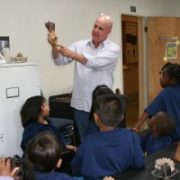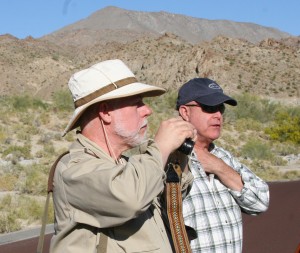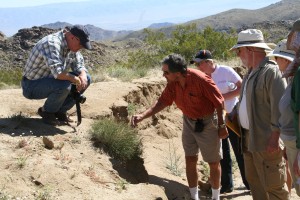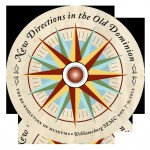New from the Smithsonian Institution Traveling Exhibition Service
Special thanks to SITES’ Scheduling Department for this guest post.
SITES Quarterly Corner | November 2012
Whether you are a new or veteran Affiliate, one of the best ways to maximize your unique relationship with the world’s largest museum and research complex is to host a Smithsonian exhibition. SITES has a plethora of exciting new offerings in the works, and we’re pleased to give the Affiliate network the scoop before widely publicizing them. Contact us for more detailed information or click on the links below.
Jacob Lawrence Illustrates Aesop’s Fables

Jacob Lawrence, 1969. The Ant and the Grasshopper from Aesop’s Fables. Image Courtesy DC Moore Gallery, New York.
The classic Aesop’s Fables seen through the eyes of one of most important American artists of the 20th century. In 1969, Jacob Lawrence (1917-2000) created a series of twenty-three lively ink drawings of Aesop’s Fables, which interpreted the ancient tales for a contemporary audience. As a socially engaged American artist who created powerful narratives of American history and historical figures, Lawrence often explored themes of social justice and ethical conduct. His drawings depict timeless stories, teaching morals in a simple, understandable way. Tour begins: 2014
Contact: Ed Liskey, liskeye@si.edu, 202.633.3142
Asian Pacific Americans
Asian and Pacific Americans make up more than 5% of the U.S. population –over 17 million people–and those numbers are growing. In the first exhibition of its kind, the Smithsonian celebrates Asian Pacific American history across the multitude of incredibly diverse cultures, and explores how Asian Pacific Americans have shaped and been shaped by the course of our nation’s history. Rich with compelling, often surprising stories, the exhibition takes a sweeping look at this history, from the very first Asian immigrants to the influx of highly skilled workers many decades later.Tour begins: September 2014
Contact: Minnie Russell, russellm@si.edu, 202.633.3160
Patios, Play Sets, and the Invention of the American Back Yard
Retreats for recreation, entertainment, dining, and relaxation, the American back yard combines the comfort and convenience of living rooms with the freedom of the open air. Patios. examines the growing popularity of outdoor living since the mid-20th century with a look at fascinating social trends like the transition from the front porch to the back yard patio, the rise of the do-it-yourself homeowner, and the use of “chemical warfare” to achieve the perfect lawn. Featuring rare, vintage photographs, along with pop-culture references and period advertisements, this exhibition will be a fun stroll through America’s back yard. Learn more
Tour begins: April 2014
Contact: Ed Liskey, liskeye@si.edu, 202.633.3142
Women, Art, and Social Change: The Newcomb Pottery Enterprise

Newcomb Pottery Vase, c. 1931. Low relief of stylized Pitcher plant. Aurelia Arbo, decorator; Jonathan B. Hunt, potter. Collection of the Haynie Family.
This major exhibition of Newcomb pottery and crafts features 175 exceptional works of pottery, metalwork, bookbinding, and textiles from important public and private collections. Enriched by new scholarship, historical photos and archival materials, the exhibition looks beyond the beauty of the works and illuminates the philosophy of the Newcomb Art School, the women and educators who embodied it, and its place in the American Arts & Crafts movement. Learn more
Tour begins: June 2014
Contact: Minnie Russell, russellm@si.edu, 202.633.3160
Visit our website to search for exhibitions by subject, size, or fee. Or contact us at 202.633.3140 or sites_schedule@si.edu.











